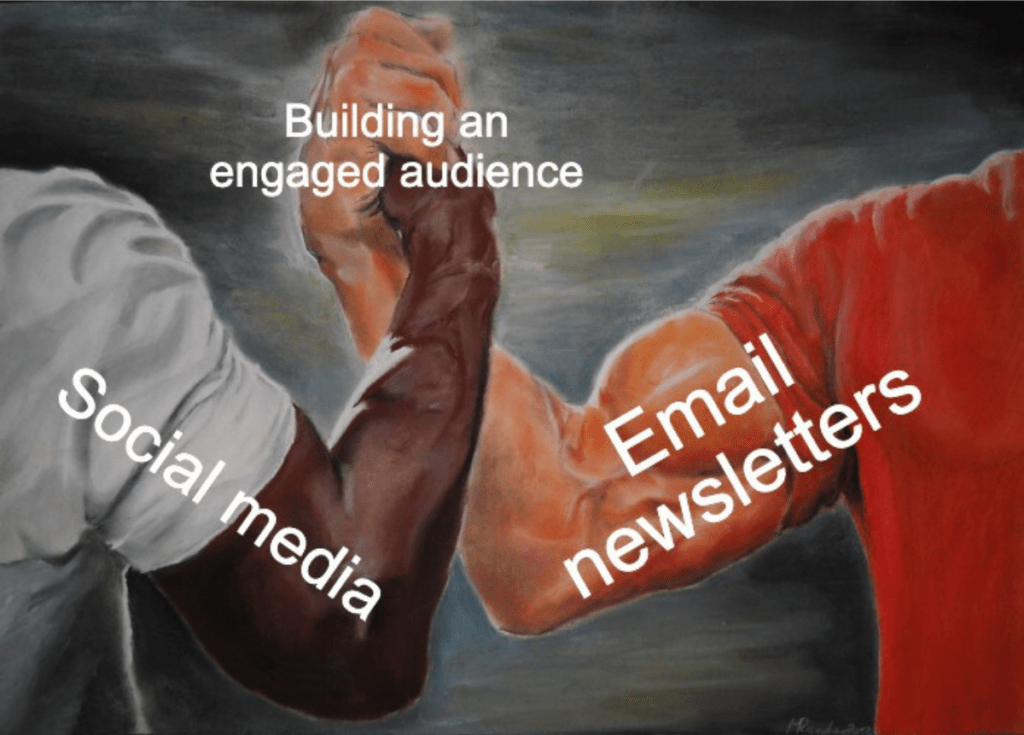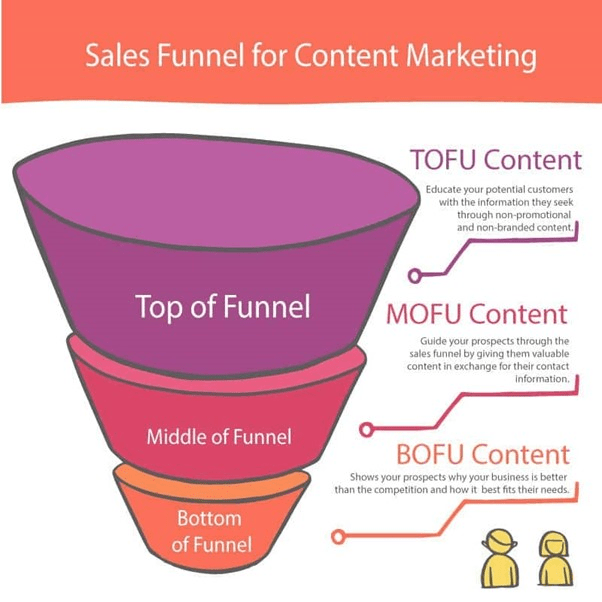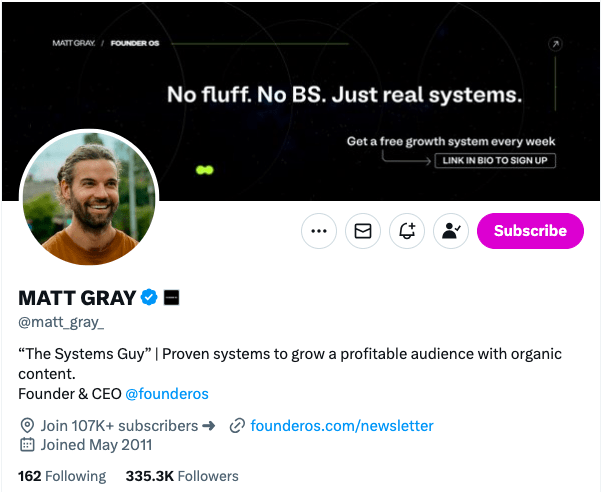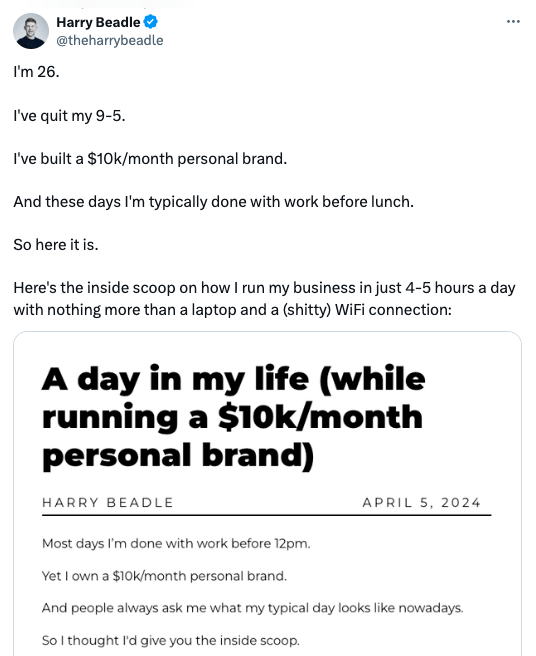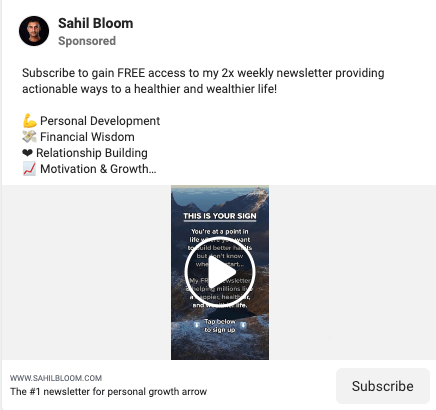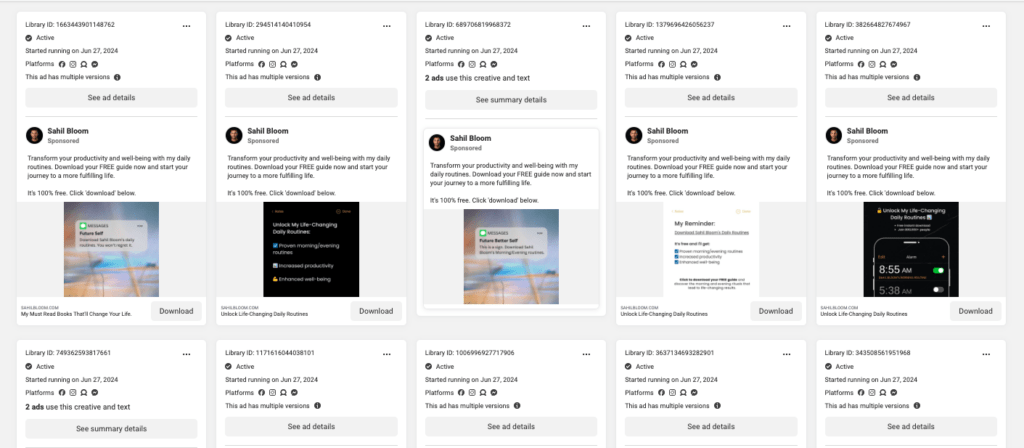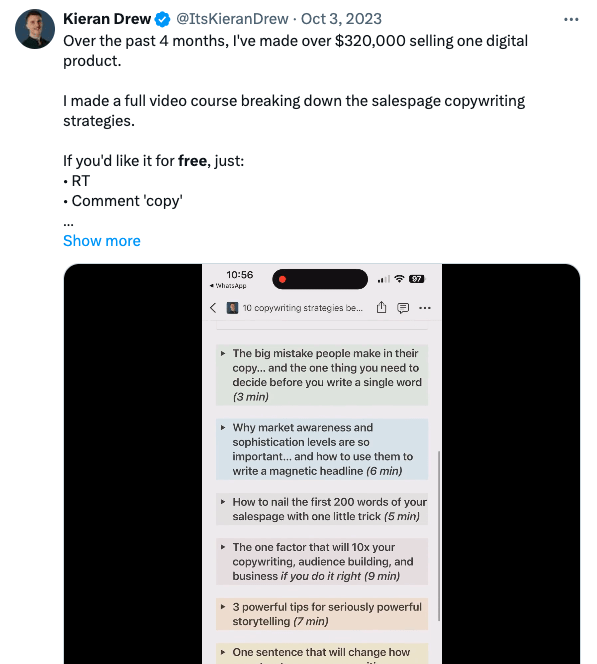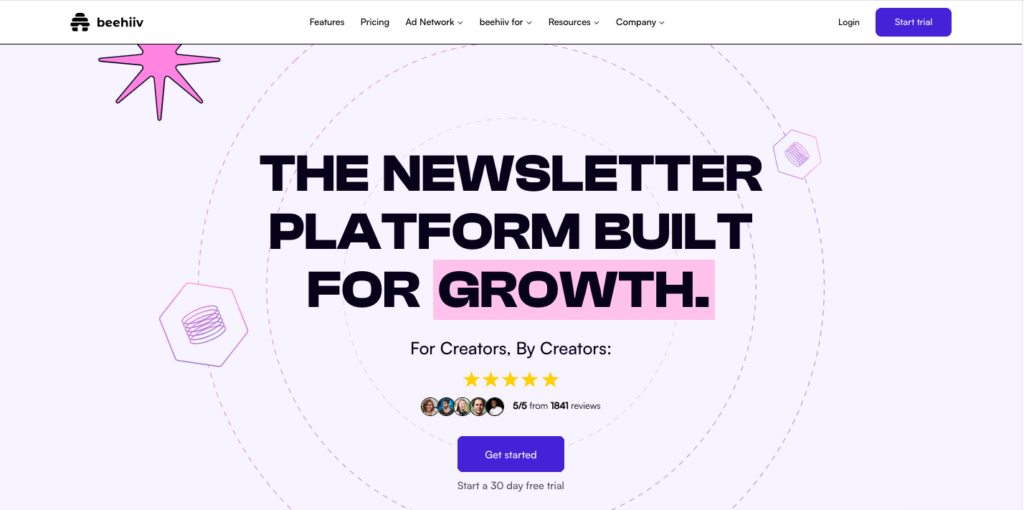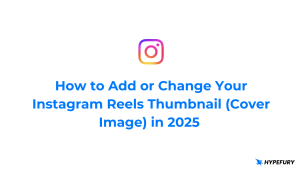
Did you know the average return on investment (ROI) of social media is 250%?
This means for every $1,000 you invest in social media, you should expect about $2,500 back in return.
Not bad, right?
Well, on the other hand, the average ROI of email is 3600%.
So, for every $1,000 you invest into email, you should expect about $36,000 back in return.
Does this mean you should ditch social media altogether and only focus on email?
Absolutely not.
Instead, you should leverage both social media and email to grow and nurture your audience.
The two channels go hand-in-hand.
If you only rely on social media, you may be able to grow your following, but you’ll limit your ability to nurture and convert those followers into lifelong customers.
If you only rely on email, you may be able to convert your audience into customers, but you’ll dramatically limit your ability to grow.
In this guide, we’ll break down exactly how to leverage your social media audience to grow your email list so you can build an engaged audience.
Before we dive into how you can turn your social media followers into newsletter subscribers, we first need to talk about sales funnels.
How Social Media & Email Work Together in a Sales Funnel
Your audience is in a funnel.
Whenever you’re trying to tap into either social media or email to grow and convert your audience, you’re really working on one part of your funnel.
What exactly is a sales funnel?
It’s the journey your audience takes as they evolve from stranger to superfan.
For example, take a look at this image to see how this works:
Top of Funnel
At the top of your funnel, you’ll see things like blog posts, YouTube videos, and of course, social media posts like Tweets or TikTok videos.
The top of the funnel is where you first introduce someone to your brand. This is where people go from unaware to aware of your brand.
Maybe they saw your viral tweet and decided to follow you.
Or they read a blog post and decided to save your website in their bookmark bar for later.
Or they found your YouTube video and clicked “subscribe.”
Your top of funnel is important because it’s where you turn a stranger into a casual follower.
Middle of Funnel
To take your audience down the customer journey even more, your goal should be to take them from the top of your funnel to the bottom – where you’ll actually make a sale and convert them from prospect into customer.
But, in order to get to a sale, you have to deepen the relationship with your audience and nurture them.
This is where email comes in.
Email is the middle of your funnel. It’s where you turn casual followers into engaged subscribers. It’s where you take someone who knows a bit about you into a friend who you have a closer relationship with.
You want to give people an opportunity to get one step closer to a sale. And the best way to do this is by converting them from social media follower to email newsletter subscriber.
Why?
Social media followers are great, but they haven’t specifically opted in to receive your marketing messages. They liked your content so they decided to follow you.
But, when someone signs up to your email list, they have to specifically agree to receive your marketing messages.
They’ve shown more purchase intent and are much more likely to be buyers.
You want to bring people from social media towards your email list so you have another way to stay in touch with them.
The reality is that social media platforms like X, Instagram, and TikTok have shifting algorithms. While they’re powerful channels to find and grow your audience, you can’t fully rely on them alone if you want to build a lasting brand.
You need to also leverage an email newsletter to build those relationships, nurture your audience, and present buying opportunities.
Bottom of Funnel
So, once someone goes from follower to subscriber, what’s next?
Transitioning into a customer.
The reality is that you can sell directly from social media and make some sales.
But, you’ll earn more on average (as seen in the 36:1 ROI) by presenting offers to your email list rather than social media.
This doesn’t mean you shouldn’t ever post salesy content on social media. You absolutely should. But, you should create a higher percentage of non-salesy content on social media than your email list.
Then, with your email list, you should still create high-value content that’s non-salesy, but promote your offers a bit more.
The main reason?
Relevance.
Your followers haven’t specifically opted in to receive your marketing messages, remember? They just showed interest in your content.
But, your email list has given you the green light to be sold to.
So, from your email list, you should begin presenting offers that lead to the bottom of your funnel.
Whether you’re selling a product or service, you can promote your offer to your email list, which typically means directing them to a sales page or product page. Or, if you have a service business, it might mean giving them a call to action to book a free consultation call with you.
The reality is that only a percentage of people who see your social media content will ever follow you.
And a percentage of your social followers will subscribe to your newsletter.
And an even smaller percentage will ever turn from subscriber into paying customer.
But, by crafting different types of content at each stage of your sales funnel, you’ll be able to eventually attract, nurture, and convert your audience to build a sustainable business.
So, how exactly do you lead a successful social media and email newsletter strategy?
Keep reading to find out.
6 Strategies to Convert Your Social Followers into Newsletter Subscribers
Trying to build an audience?
And, you want your audience to engage with your content and purchase your products and services?
Here are a few best practices to keep in mind to help you integrate your social media audience with your email audience:
1. Add a newsletter link to your social bio
The simplest way to start integrating social media with your email newsletter is to add a subscribe link to your social media bio.
In this case, Matt Gray, a Hypefury user, places a link directly into his X (Twitter) bio to guide his followers onto his email list.
Now, Matt has 107,000 subscribers, due in part to the fact that he directs his social audience right to his newsletter.
Considering he’s making over $700,000 per month from his businesses, it’s probably a good idea to replicate his audience-building strategy.
2. Create a conversion-focused newsletter landing page
Another way you can grow your audience with social media and email is to create a high-converting landing page.
In the example above, The Daily Bite used beehiiv’s landing page builder to create a clean, simple landing page that leverages social proof to persuade visitors to sign up.
They first lean on social proof in the description by mentioning how many people read the newsletter (110,000+).
Then, below the first email signup form, they have a “What our readers say” section that shows off testimonials from their subscribers.
Rather than just relying on a basic newsletter subscribe page with a simple form, add some social proof to increase your conversion rate and turn more followers into subscribers.
3. Tease your email newsletter on social media
Want to build an engaged audience?
Then start teasing them.
No, not like the way you teased Sally in elementary school by pulling her hair.
Tease them with your newsletter content.
Showing off a sample of your newsletter as a social media post is a great way to give your readers a taste of what it’s like being on your email list.
Harry Beadle integrates his social media audience into his email list by posting sneak peeks of his newsletter on X (Twitter).
And, he’s not doing anything too fancy here.
He’s simply taking screenshots of his recent newsletters and posting them onto X.
Then, once his Tweet starts to get some engagement, he plugs in a call to action to that specific newsletter below his main tweet as a comment:
4. Run paid ads
Ever heard of Sahil Bloom?
In just a few years, he’s managed to grow his social media audience to over 2.2 million followers:
X (Twitter): 1,000,000
Instagram: 659,000
LinkedIn: 576,000
YouTube: 19,000
But, he didn’t stop there.
He understands the power of a holistic audience which is why he’s also grown his newsletter to a whopping 800,000 subscribers.
What’s one way he’s integrating social media with email?
He runs paid ads directly to his newsletter.
In fact, as of right now (July 5, 2024), he’s running over 36 different Facebook and Instagram ads towards his email list.
Yes, you read that right. 36.
Not only does he promote his newsletter organically on his social media bios with a direct link to his email subscribe page, but he’s leaning heavily into a paid acquisition strategy to ensure his followers don’t just remain followers – but also turn into subscribers.
5. Do a lead magnet giveaway on 𝕏/Twitter
Want to know one of the fastest ways to grow your followers and subscribers simultaneously?
Launch a lead magnet giveaway on X.
In the example above, Kieran Drew gave away a free course on how to sell more digital products with better copywriting.
To get the course, X users have to comment on the post and follow him to receive the guide.
He sets up his giveaway tweet in HypefFury so it automatically sends an X DM to anyone who comments on his post.
Then, in the DM, users have to click through to a landing page and give their email address in exchange for the free course.
The result?
A giveaway launch brings in new followers and new subscribers all at once.
It’s a great way to quickly boost up your total audience size between social media and email with a single post.
6. Leverage a Creator-Focused Email Platform
If you want to supercharge your email audience, then you need to use a creator-first email newsletter platform like beehiiv.
Built by the same team that helped the Morning Brew newsletter scale to millions of subscribers, beehiiv is a newsletter platform built for growth-focused creators.
With built-in growth features like:
Referral program
Organic recommendations
Paid recommendations (Boosts)
Magic links (for easy growth on social media)
beehiiv can help you grow your audience, keep them engaged, and help you build a sustainable online business.

